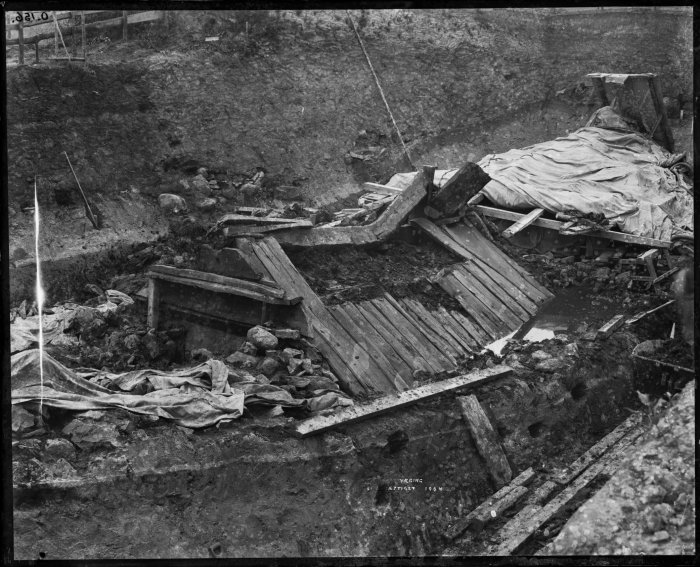Why Is The Oseberg Ship Burial A Great Viking Mystery?
Ellen Lloyd - AncientPages.com - The Oseberg Ship burial is one of the greatest Viking mysteries. The individuals buried together with the ship are a riddle, and the fact something very strange occurred before the burial was sealed gives scientists reason to say the ship took a mystery with it to the grave. Will we ever be able to solve the mystery of the Oseberg ship?
Excavation of the Oseberg ship in 1904. Credit: Viking Ship Museum, Oslo, Norway - Public Domain
The Vikings traveled to distant lands in their remarkable longships. The Vikings’ ships were the greatest technical and artistic achievement of the European Dark Ages. Without these magnificent ships, the Viking Age would never have happened.
"During the Viking era, there were different classes of ships. The longships were mainly used as warships, and the ships called Knarrs (or knorrs in Old Norse) served as slower passenger and cargo ships." 1
The Discovery Of The Oseberg Viking Ship
Unfortunately, archaeologists have discovered only a few remains of Viking ships, which is why the Oseberg ship has been labeled as one of the finest finds of the Viking Age. Discovered in 1903 in a very damp burial mound at the Oseberg farm near Tønsberg in Vestfold og Telemark county, Norway, the ship survived almost intact.
"The Oseberg Viking ship measured 21.40m long by 5.10m wide. It was constructed primarily out of oak planks, and the vessel's bow and stern were covered in elaborate carvings while it contained 15 pairs of oar holes, which meant up to 30 men could row the ship as required.
The Oseberg ship was a burial ship for two Viking women who died in 834. A burial chamber was dug right behind the ship's mast. The walls were decorated with fantastic woven tapestries, and the dead women lay on a raised bed.
The women had many burial gifts, including personal items such as clothes, shoes, and combs, ship equipment, kitchen equipment, farm equipment, three ornate sledges, five carved animal heads, five beds, and two tents. There were fifteen horses, six dogs, and two small cows." 2
The identity of the two women onboard the Oseberg ship remains a mystery. One was about 70-80 years old, and the other was 50 years old. The relationship between these two women is unknown. It has been suggested the younger woman may have been a sacrificed servant, but some experts say both females held a high rank. Unfortunately, shortly after the burial mound was created, grave robbers stole burial goods, and we may never know who these women were. A vital piece of history was lost, but at least most of the ship could be saved for future generations.
The Oseberg ship when was cleared of stones and the burial chamber was removed. Credit: Museum of Cultural History / CC BY-SA 4.0
The Oseberg ship, dated 820, was excavated in 1904 in three months. The restoration of the stunning ship was a lengthy process that took 21 years. The goal was to use as much as possible of the original timber. Today, the ship's replica, which is kept at the Viking Ship Museum in Norway, consists of more than 90 percent of the original timber.
Why Was The Oseberg Viking Ship Crushed With Stones And Moored?
One of the greatest mysteries concerns an unknown Viking burial practice associated with the Oseberg ship.
"Before the ship was sealed inside the mound, nearly 180 tonnes of stone were transported and placed around and thrown on top of the ship. The stone was moved several hundred metres, requiring significant effort.
On the foredeck, there were treasures that the dead were to be buried with. When the many tonnes of stone hit the ship, the deck was crushed.
The valuable objects were found squeezed between the large stones. Over time, the weight of the masses and stones in the burial mound contributed to further damaging the items and the ship. The stone pile inside the ship puzzles archaeologists." 3
Ancient Viking funeral traditions and rituals were very complex. "Before the age of Christianity, when Vikings still worshipped pagan gods, it was common to bury a Viking with his belongings, often lying in a boat or a wagon to make the journey to the next world easier. People believed the deceased person would need particular objects in the afterlife." 4
By covering the Oseberg ship with times of stones, Vikings destroyed valuable burial items needed in the afterlife without any consideration for their value. Can the Oseberg ship burial provide us with knowledge of an unknown Viking burial tradition?
Two women were buried in the Oseberg ship. One was younger and the other elder, but their identity remains unknown. Credit: Adobe Stock - Deivison
According to archaeologist Hanne Lovise Aannestad at the Museum of Cultural History, who specializes in the burial chamber of the Oseberg ship, the "significance of the stones and the destruction is uncertain." Archaeologists say the stones are part of a burial ritual that took place before the burial mound was sealed, but what was behind this ritualistic destruction?
What were the Vikings who conducted the burial trying to express?
“It almost seems paradoxical,” Aannestad told Science in Norway. “A ship can be interpreted as a means of travel, at the same time as it is completely anchored by all this stone and the mooring.”
She points out that the stone links the ship to the mound and a world beneath the ground.
“But we don't really know what they envisioned,” she says.
The burial chamber on top of the ship. You can also clearly see the layer of stones in front of the chamber. Credit: Museum of Cultural History / CC BY-SA 4.0
Perhaps the ship was seen as a vessel to transport the dead. Then, one possible interpretation is that the items in the mound also had to ‘die’ to accompany them, Aannestad explains.
“At the same time, there were probably beliefs that the dead could live inside the mound. Sagas mention that they ‘make noise in the mound’ and that someone has to go inside to calm them,” she says.
Was The Oseberg Ship On Its Way To The Norse Underworld Hel?
In Norse mythology, the underworld Hel (Old Norse Hel, "Hidden") is the dwelling place of the dead. This dark, gloomy, and cold place is ruled by the goddess Hel, one of three horrible children of the trickster god Loki.
Hermod before goddess Hel in the underworld. Credit: Guerber, H. A. (Hélène Adeline) (1909). Myths of the Norsemen from the Eddas and Sagas
Professor of Viking Age archaeology and a specialist in Viking ships at the Museum of Cultural History Jan Bill points out that "the idea that the soul of a newly dead person is embarking on a voyage to reach another place to dwell in the afterlife is widespread in time and space. Skaldic poetry, supported by iconographic evidence from Gotlandic picture stones and bracteates, suggest that in Late Iron and Viking Age too, Scandinavian ideas of such posthumous voyages existed, be it to the nether world Hel (only later turned into the appalling Hell) or to the banquet halls of the gods in their heavenly world, Asgard." 5
Although the physical Viking ship remained in the burial mound, "intangible elements of both the items in the mound and the person's soul may have been free to continue their journey.
"One way to understand the stones is as a kind of reverse ballast – that is, weight added to a ship to make it more stable on water.
If the stones had been placed on the ship while it was in the water, the ship and everything on board would have sunk to the bottom. If the Norse underworld, called Hel, is understood to lie below the ground, then perhaps all the stones could help make the downward journey easier." 3
Puzzling Burial Ritual Unique To The Oseberg Ship
The stone feature has not been seen in other known ship burials, such as the Gokstad ship or the Tune ship. It is unique to the Oseberg ship, but its purpose remains a mystery.
There is still much we do not understand about Viking burial traditions, but traces of ritualistic destruction have been encountered before. Archaeologists have found bent swords and damaged weapons in Viking and other burials.
The meaning of these different burial rituals in unclear, but could "relate to personal or familial logic." 3
Professor Bill suggests that this great diversity in burials can also be seen as a form of storytelling. Maybe the burials are different because they were connected to the person who died, and the grave was intended to express something about the person who was buried, he proposes.
There is still much we do not know about the beliefs of our ancestors. If we perhaps one day in the future find a similar Viking ship burial, our understanding of the Oseberg ship will increase, and we will finally be able to solve at least one of its mysteries.
Written by Ellen Lloyd – AncientPages.com
Copyright © AncientPages.com All rights reserved. This material may not be published, broadcast, rewritten or redistributed in whole or part without the express written permission of AncientPages.com
Expand for references- Ellen Lloyd - Viking Longships: Fearless Dragonships Daring The Oceans And Seas - AncientPages.com
- A. Sutherland - Oseberg Ship: Amazingly Well-Preserved Viking Burial Ship - AncientPages.com
- Lasse Biørnstad - The Oseberg Viking ship is still shrouded in mystery - Science In Norway
- Ellen Lloyd - Viking Funeral Traditions: Burning Ships, Complex Ancient Rituals And Incredible Up Helly Aa Festival - AncientPages.com
- Jan Bill - Ambiguous Mobility in the Viking Age Ship Burial from Oseberg
More From Ancient Pages
-
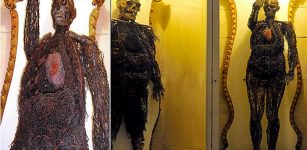 Incredible Anatomical Human Machines – Two Fleshless Bodies Mystery
Featured Stories | Jul 24, 2018
Incredible Anatomical Human Machines – Two Fleshless Bodies Mystery
Featured Stories | Jul 24, 2018 -
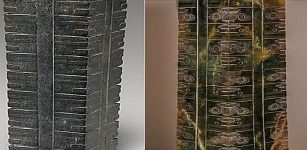 Mysterious Jade Cong – Perplexing Ancient Chinese Artifact
Featured Stories | Jan 3, 2023
Mysterious Jade Cong – Perplexing Ancient Chinese Artifact
Featured Stories | Jan 3, 2023 -
 Piecing Together Scotland’s Religious Past With Shards Of Glass
Archaeology | Feb 28, 2023
Piecing Together Scotland’s Religious Past With Shards Of Glass
Archaeology | Feb 28, 2023 -
 On This Day In History: Admiral John Byng Charged With ‘Failing To Do His Utmost’ – Executed – On Mar 14, 1757
News | Mar 14, 2017
On This Day In History: Admiral John Byng Charged With ‘Failing To Do His Utmost’ – Executed – On Mar 14, 1757
News | Mar 14, 2017 -
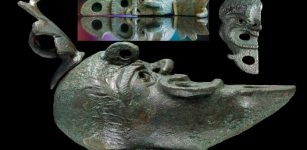 Rare Bronze Oil Lamp With A Face Cut In Half Unearthed In Israel
Archaeology | May 7, 2021
Rare Bronze Oil Lamp With A Face Cut In Half Unearthed In Israel
Archaeology | May 7, 2021 -
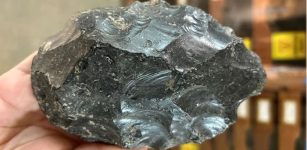 1.2-Million-Year-Old Obsidian Axe Made By Unknown Human Species Discovered In Ethiopia
Archaeology | Jan 25, 2023
1.2-Million-Year-Old Obsidian Axe Made By Unknown Human Species Discovered In Ethiopia
Archaeology | Jan 25, 2023 -
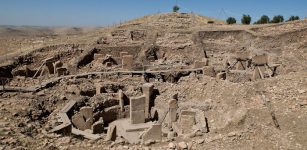 This Is The Mysterious Hilltop Where Civilization Began Scientists Say
Archaeology | Jun 24, 2022
This Is The Mysterious Hilltop Where Civilization Began Scientists Say
Archaeology | Jun 24, 2022 -
 Was Lailoken A Mad Prophet Or The Real Merlin Of Scotland?
Featured Stories | Sep 9, 2019
Was Lailoken A Mad Prophet Or The Real Merlin Of Scotland?
Featured Stories | Sep 9, 2019 -
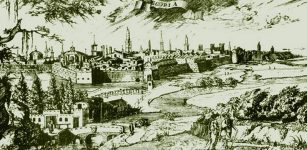 On This Day In History: Fire Of Skopje Started Intentionally – On Oct 26, 1689
News | Oct 26, 2016
On This Day In History: Fire Of Skopje Started Intentionally – On Oct 26, 1689
News | Oct 26, 2016 -
 Mysterious Ancient Giant Jars Made By An Unknown Civilization Discovered In India
Archaeology | Mar 30, 2022
Mysterious Ancient Giant Jars Made By An Unknown Civilization Discovered In India
Archaeology | Mar 30, 2022 -
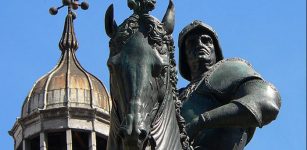 Bartolomeo Colleoni: Most Respected Mercenary General Of The 15th Century Italy
Featured Stories | Sep 10, 2019
Bartolomeo Colleoni: Most Respected Mercenary General Of The 15th Century Italy
Featured Stories | Sep 10, 2019 -
 ‘Sophisticated’ 4,000-Year-Old Steppe Pyramid Discovered In Kazakhstan
Archaeology | Aug 12, 2023
‘Sophisticated’ 4,000-Year-Old Steppe Pyramid Discovered In Kazakhstan
Archaeology | Aug 12, 2023 -
 Why Is Roulette Called The Devil’s Game?
Ancient History Facts | Apr 3, 2018
Why Is Roulette Called The Devil’s Game?
Ancient History Facts | Apr 3, 2018 -
 Fall Equinox Explains Unusual Alignment Of Egypt’s Great Pyramids – Engineer Says
Archaeology | Feb 26, 2018
Fall Equinox Explains Unusual Alignment Of Egypt’s Great Pyramids – Engineer Says
Archaeology | Feb 26, 2018 -
 On This Day In History: World War II: Battle Of Cape Esperance Was Fought – On October 11, 1942
News | Oct 11, 2016
On This Day In History: World War II: Battle Of Cape Esperance Was Fought – On October 11, 1942
News | Oct 11, 2016 -
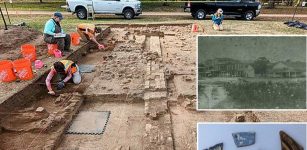 More Than 10,000 Artifacts Unearthed At The Birthplace Of Texas
Archaeology | Mar 12, 2024
More Than 10,000 Artifacts Unearthed At The Birthplace Of Texas
Archaeology | Mar 12, 2024 -
 Full-Sized Model Of Noah’s Ark Created In The U.S. To Show People The Evolution Theory Is False
News | Oct 20, 2022
Full-Sized Model Of Noah’s Ark Created In The U.S. To Show People The Evolution Theory Is False
News | Oct 20, 2022 -
 Altai Mountains Were Home To Porcupines 30,000 Years Ago
Archaeology | Mar 14, 2017
Altai Mountains Were Home To Porcupines 30,000 Years Ago
Archaeology | Mar 14, 2017 -
 DNA Reveals Unique Ancestry Of Inhabitants Of The Angolan Namib Desert
DNA | Oct 3, 2023
DNA Reveals Unique Ancestry Of Inhabitants Of The Angolan Namib Desert
DNA | Oct 3, 2023 -
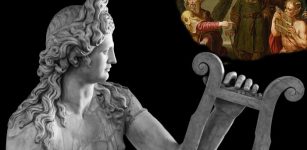 Apollo Punished Rivals For Their Extraordinary Musical Skills
Featured Stories | Apr 19, 2022
Apollo Punished Rivals For Their Extraordinary Musical Skills
Featured Stories | Apr 19, 2022




